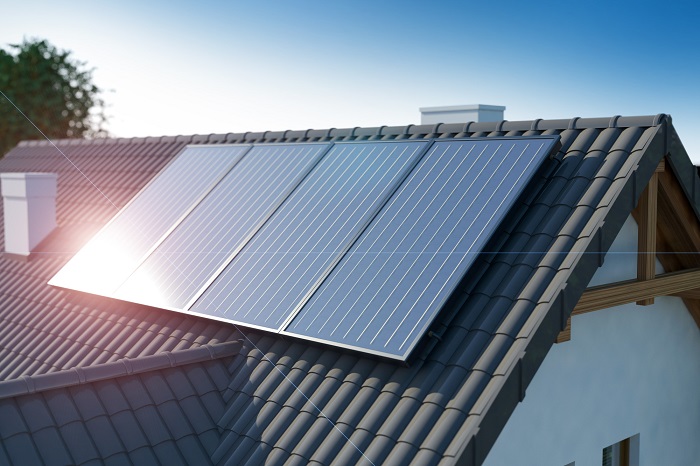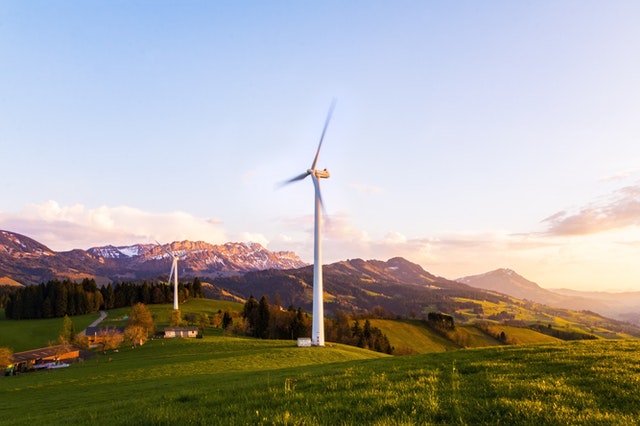

If you’re in the market for a new home and conscious of being environmentally friendly, you may consider looking specifically for a green home. Green homes are designed to be sustainable through their energy usage, building materials, or both. But how do you know whether a home is considered to be green?
There’s already plenty of detail that goes into finding the perfect home, but there are particular aspects to which you may want to pay close attention. Sources of renewable energy and LEED, or Energy Star certification, are two important factors to keep an eye on. Here is a guide to beginning your search for a green home:
Where does the energy come from?
The first consideration and tell-tale sign of a green home is a renewable energy system. However, there are several different sources of green energy that your potential new home may have. Three popular options include solar panels, wind turbines, and geothermal heating and cooling. Each source of energy has its own unique benefits and they all can help you save money on utility bills.
When searching for houses for sale, a description that includes one of these renewable options is a good sign that you may have found a green home. Make sure to do the proper research when viewing homes with these systems, and ask plenty of questions, such as: how old is the system? And how much energy does it produce annually? Going into home buying talks with background knowledge on the various systems will help you as well.
Solar

Solar panels are perhaps the most popular source of renewable energy for residential homes—and for good reason. There are numerous benefits to going solar at home. Since energy from the sun is free, you can drastically reduce the cost of your energy bills. They require little maintenance, and if they produce enough energy, you may be able to become completely independent of energy companies. One thing to consider, however, when buying the home is whether or not the previous owner purchased the solar panels or is leasing them from a company. If the panels are a lease, you’ll have to work out a way to get the lease transferred into your name.
Wind Turbines

The benefits of wind power are nearly the same as those from solar panels—mainly reduced energy costs and energy independence. However, it is important to understand that wind turbines on a residential property may require more annual maintenance than a solar panel. In order to properly operate a wind farm at your home, you’ll need to understand how to adjust the system, replace parts, and check for damage. But do not fear if this seems like too much work. In many cases you should be able to outsource the maintenance to the installer of the system.
Geothermal Heat Pumps
While solar and wind energy are somewhat dependent on the weather, geothermal energy is a viable option for any climate. Geothermal heat pumps produce energy by capturing and exchanging heat from below the Earth’s surface, where temperatures are relatively stable. This makes geothermal heat pumps easy to use in even the most extreme climates, and particularly useful in those that are cold. Another added bonus of geothermal heat pumps is that the underground loops that capture the heat can last up to 50 years, compared to 20-25 years for wind and solar.

Is the home certified as energy efficient?
There are two major certification programs that recognize energy efficiency in residential homes—Energy Star and Leadership in Energy and Environmental Design (LEED). A certification from either program means the home meets the required standards for energy efficiency, and therefore, is more environmentally-friendly than most other homes on the market. However, this does not mean that the home utilizes renewable energy, per se. Instead, it suggests that the home uses systems and products that perform better and require less energy, therefore lowering energy demand and air pollution.
Certification from either program is a good sign that the home you’re buying is considered green. It’s also a sign that you may be able to save additional money on the home in the long run. Energy efficiency can lead to spending less on utility bills on a yearly basis, and should you choose to resell the home, your home value could be thousands of dollars higher than comparative homes without certification.
Here is a breakdown of the criteria that help each program determine their certifications:
Energy Star
According to Energy Star, “These homes are at least 15% more energy efficient than homes built to the 2004 International Residential Code (IRC), and include additional energy-saving features that typically make them 20–30% more efficient than standard homes.” The energy-efficient features that they consider are those that can help reduce energy consumption and improve the overall environment within the home.
One example is effective insulation and windows which can help to lock in heat during the winter, and cool air during the summer, requiring less usage of HVAC systems. Another example is efficient duct systems that can help improve air quality within your home. Energy Star also certifies appliances such as lighting fixtures, refrigerators, and washing machines, as well as others. The inclusion of a variety of these aspects within a home are important factors to acquire certification.
LEED
Whereas Energy Star certification is primarily based on the energy performance of the home relative to others, the LEED certification process is based on the design of the home. This means that there is a heavy importance placed on the sustainability of the construction and design procedures. The process is based on a rating score, which offers various levels of certification. The minimum rating will get you a standard certification, while the highest level will get you platinum, with silver and gold levels in between.
There are several credit categories for LEED certification, such as environmentally-friendly building materials, water efficiency, air quality, and others. It’s also important that the building site itself is in compliance with environmental regulations, maintains a site boundary, and shares energy and water usage data. So when looking for a green home, inquire if the construction project was LEED certified.
If you’re in the hunt for a new house and are specifically interested in a property that is environmentally friendly, there are several factors to consider that may qualify it as a green home. While you may take notice of the landscape architecture and nature surrounding the home that make it look green, there is perhaps no greater consideration than that placed on the home’s energy usage. When browsing a potential home, look out for sources of renewable energy and/or certification of energy-efficiency, which are integral aspects of a green home.


